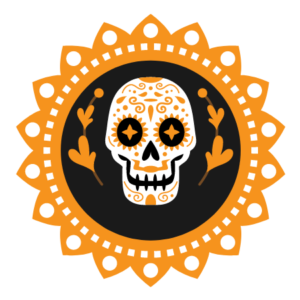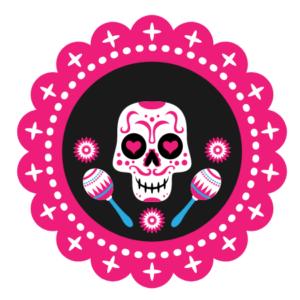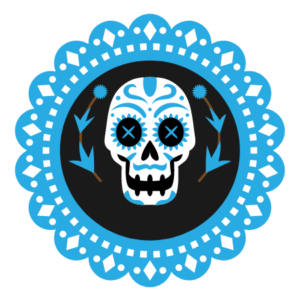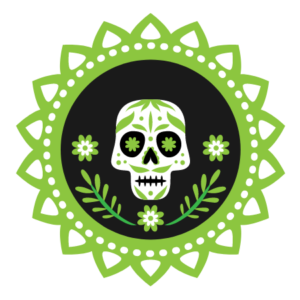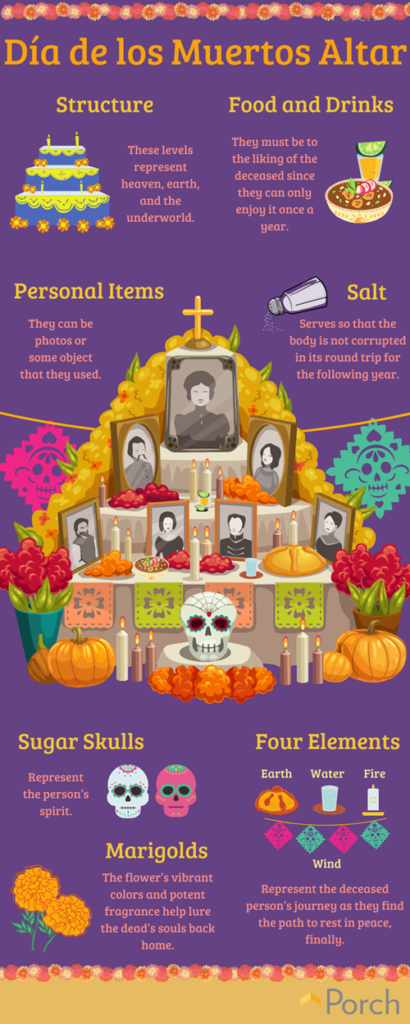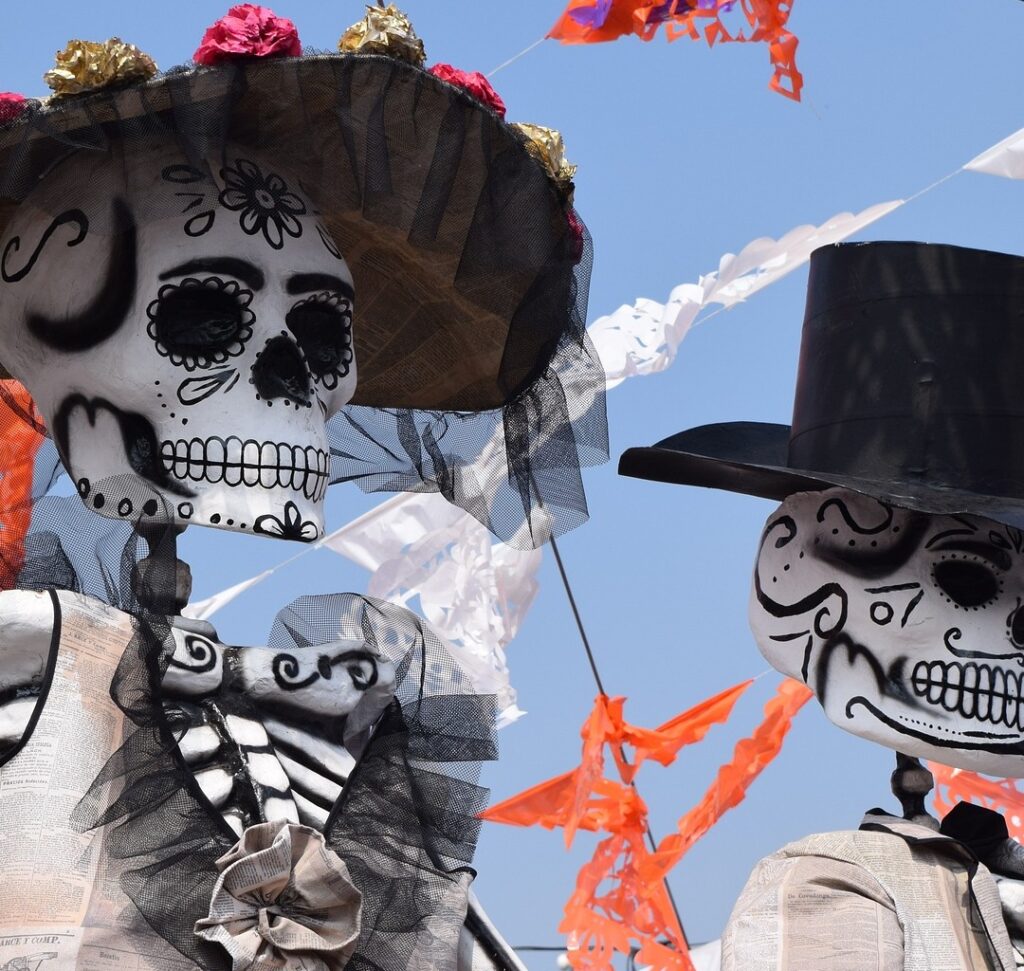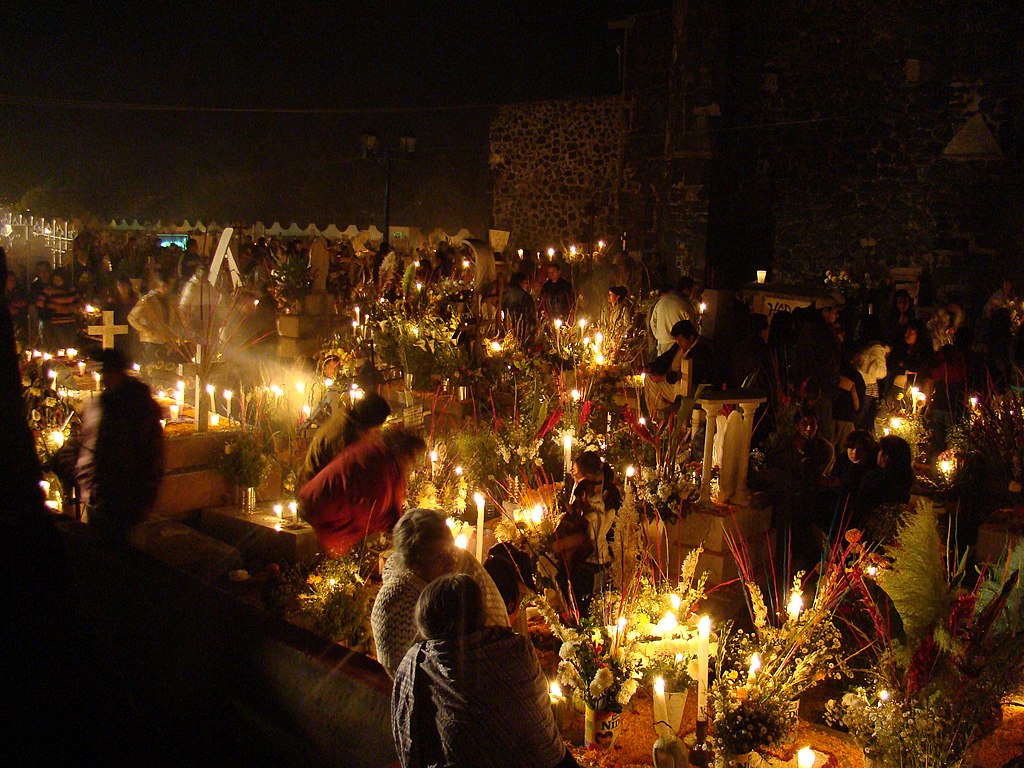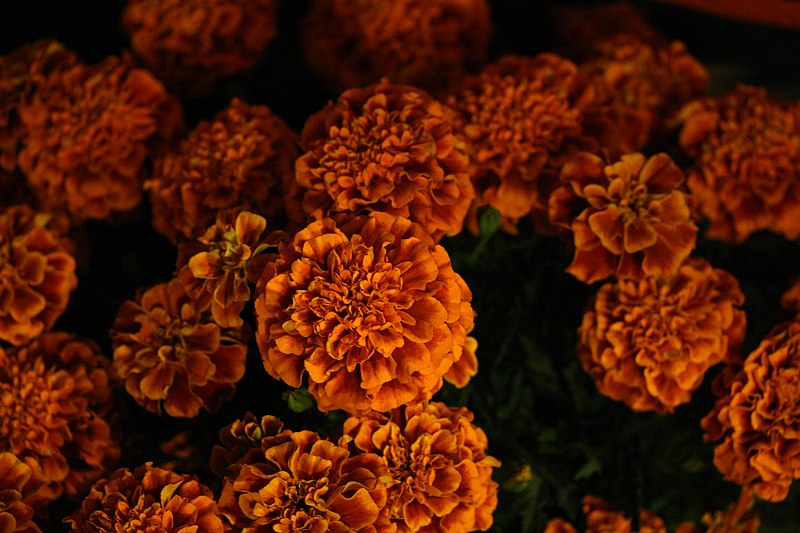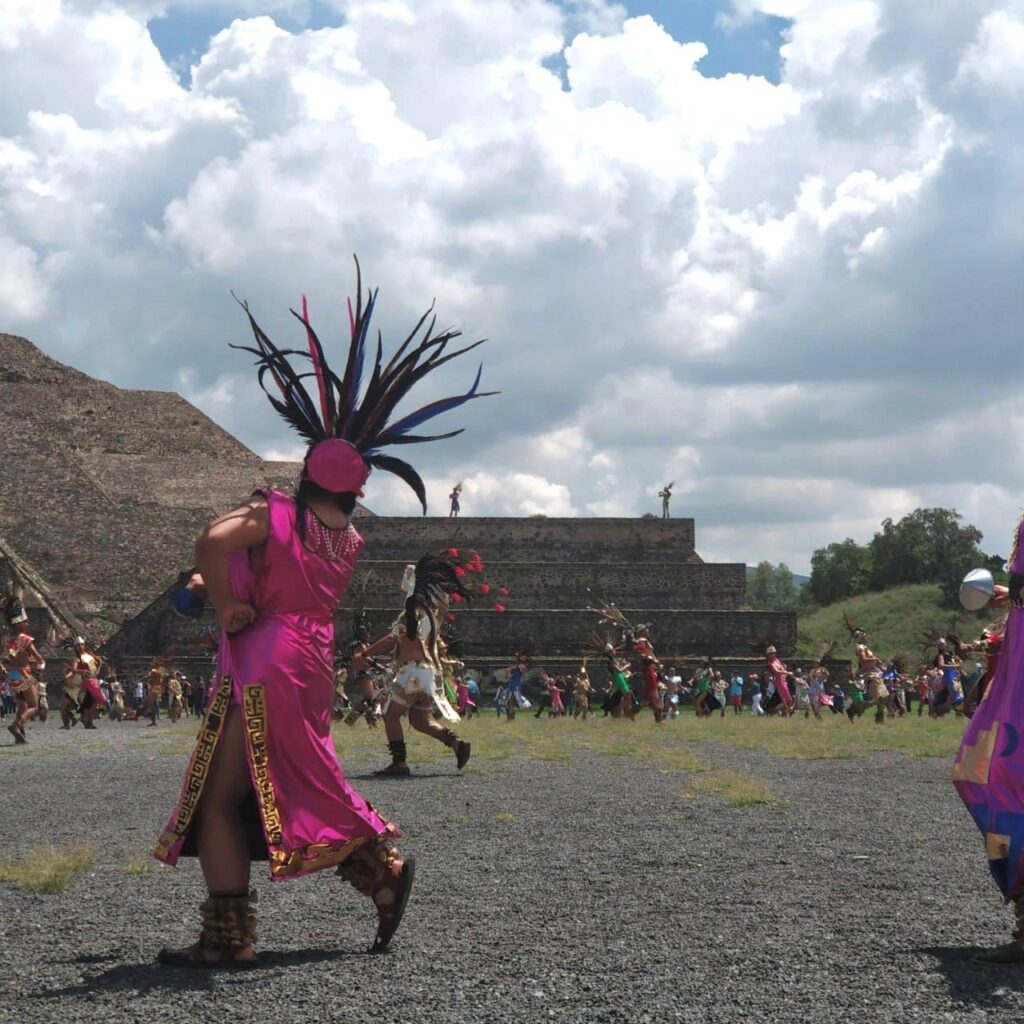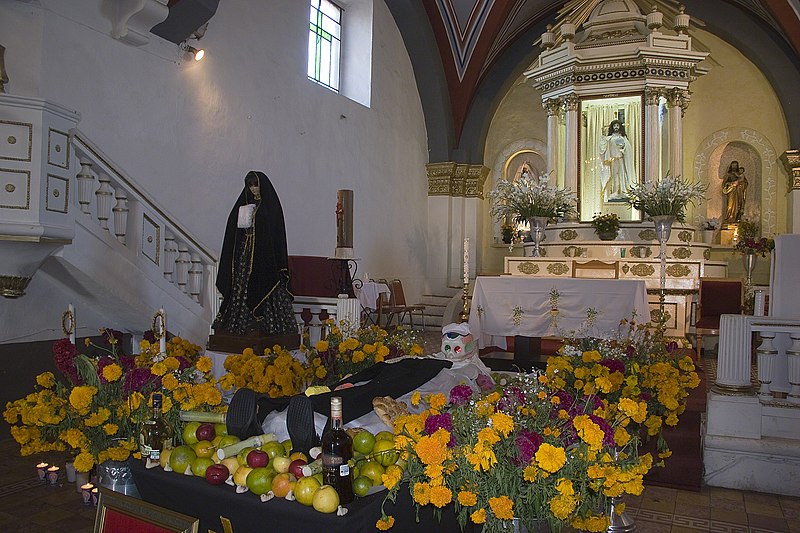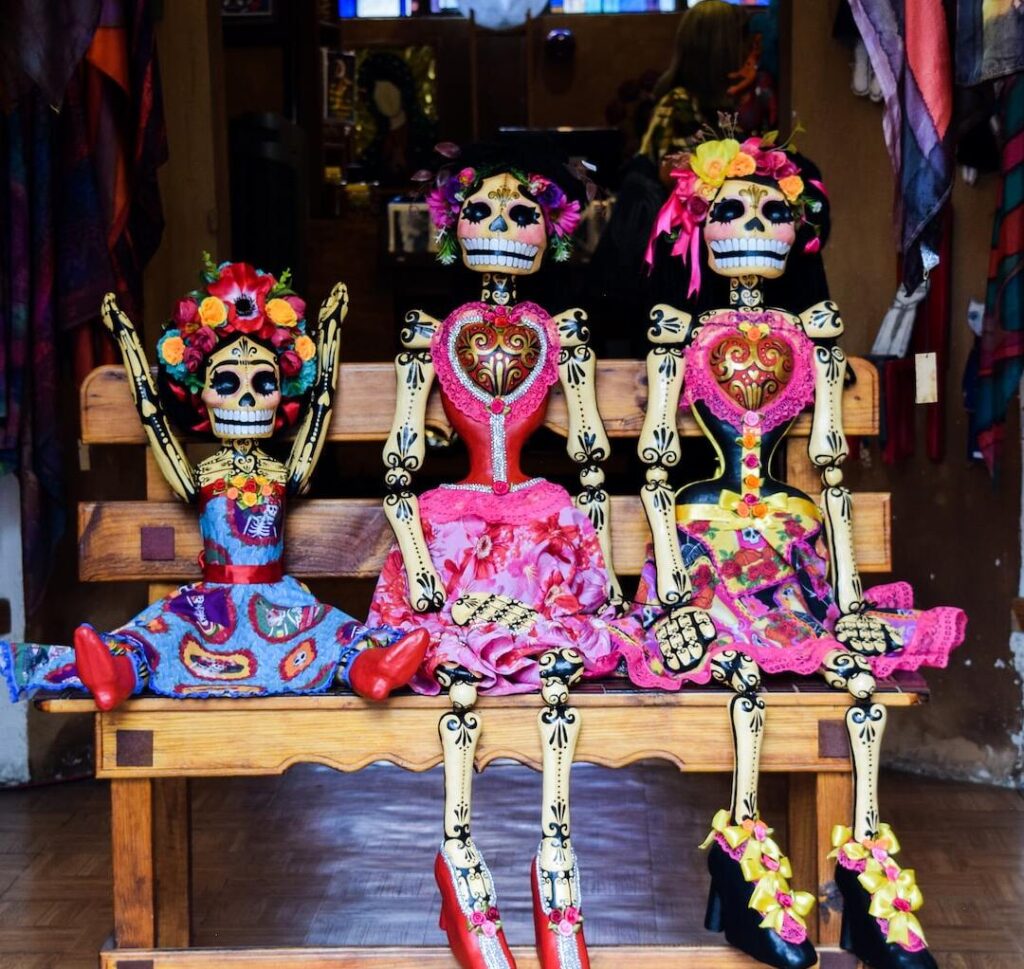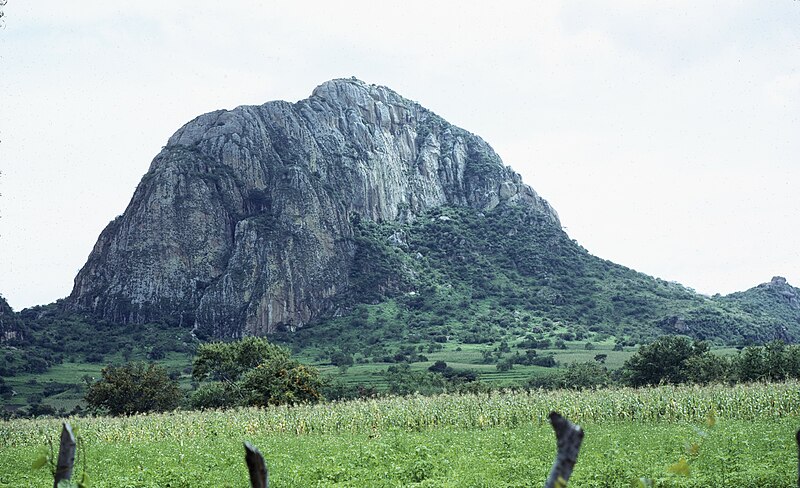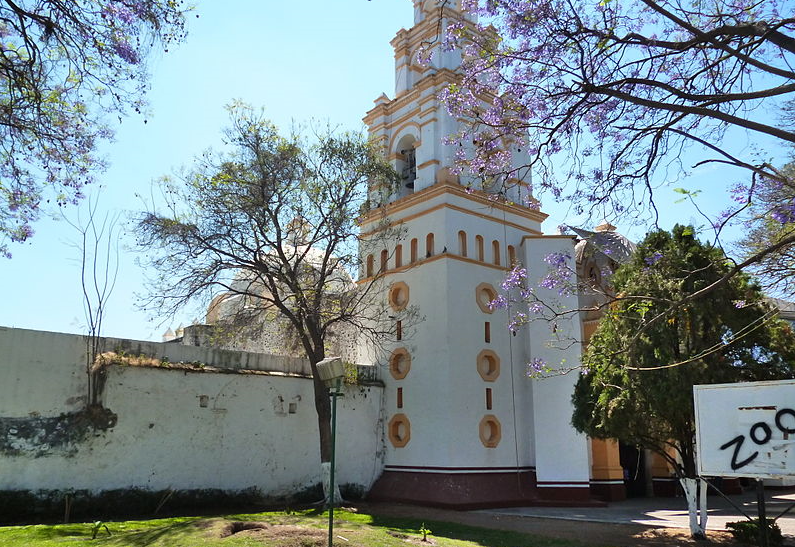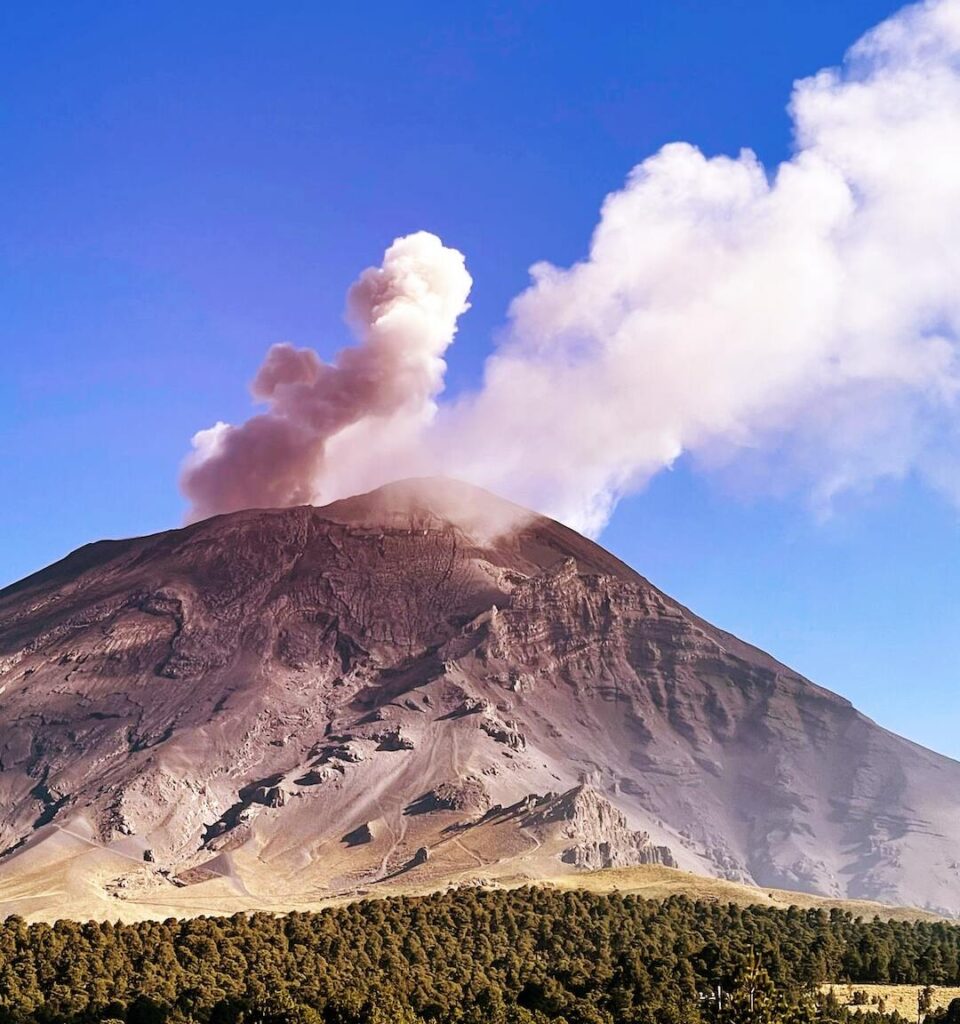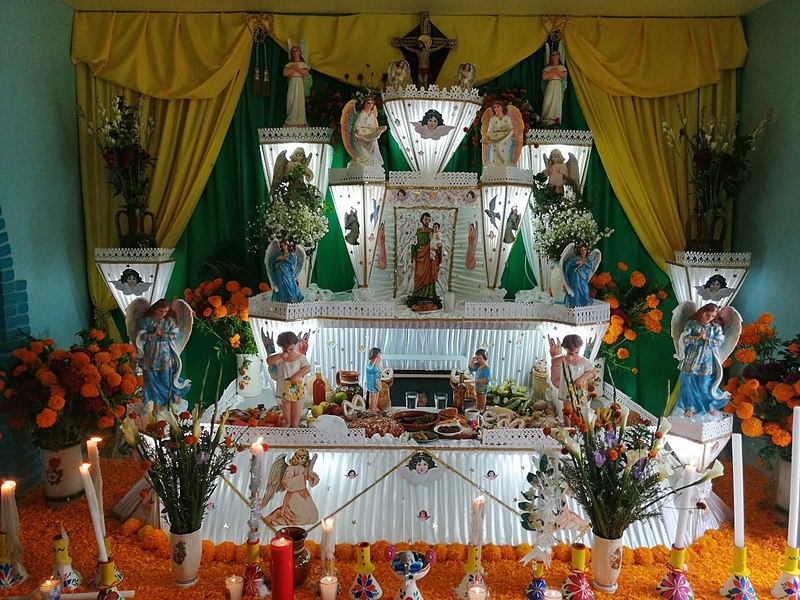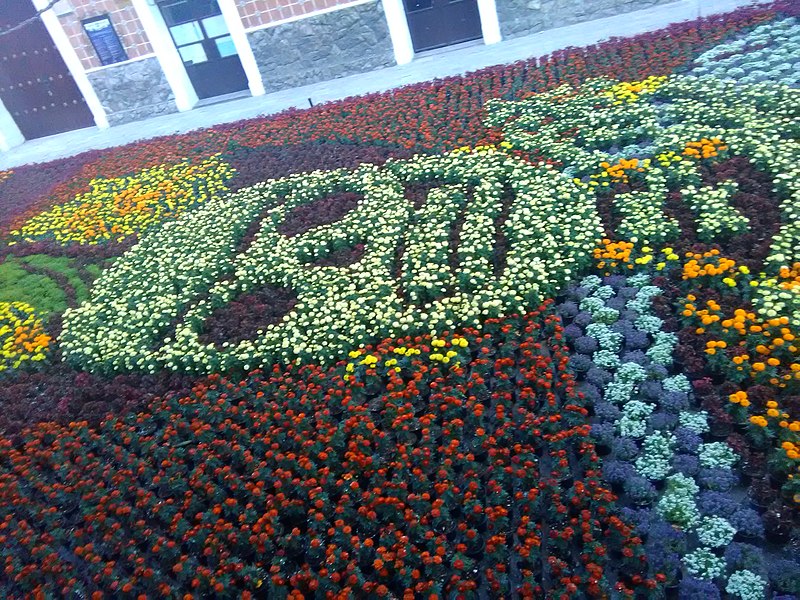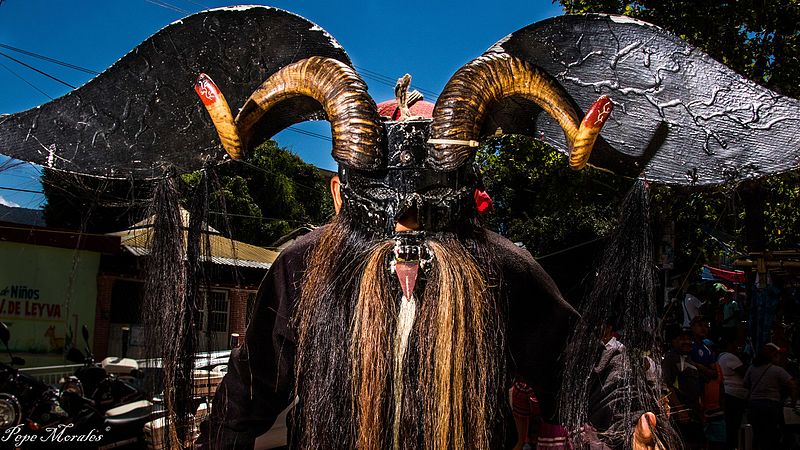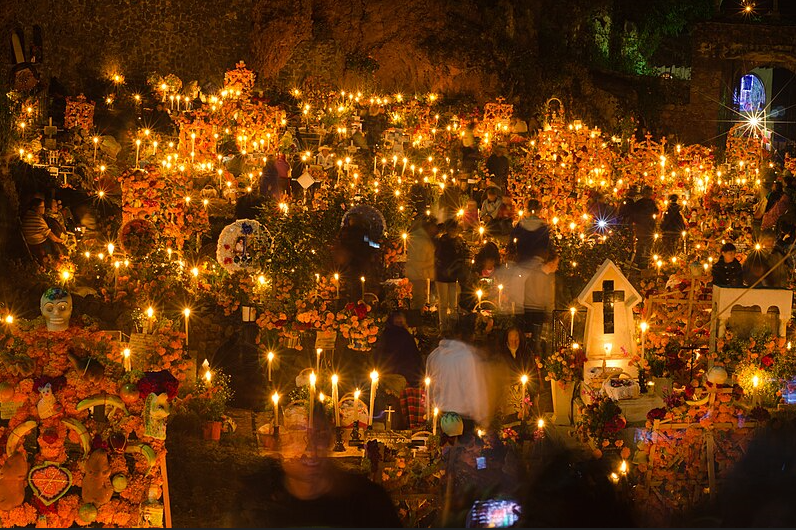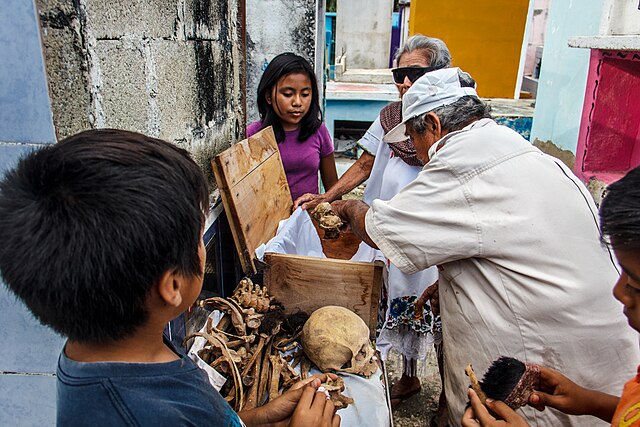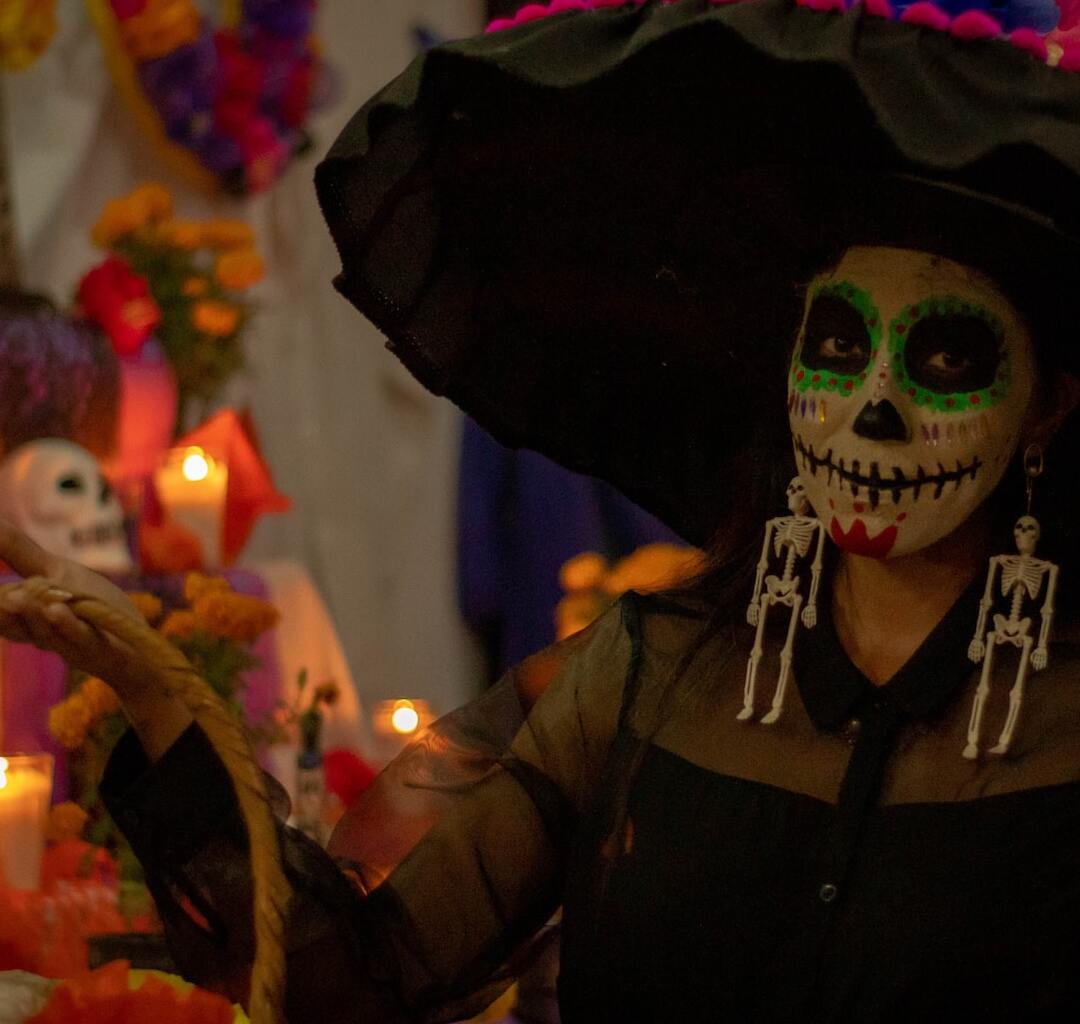Dia de los Muertos 2024: The Ultimate Guide
Do you want to discover what is dia de los muertos?
Do you want to know the traditions (food and customs)?
Or are you looking for activities for this day?
Where to spend dia de los muertos 2024 in Mexico?
Keep reading this article to know what is this festivity, its history, interesting facts, and amazing activities to experience in Mexico.
Meaning and origin
Mexico celebrates Dia de los muertos every November 1st and 2nd. This beautiful holiday aims to remember deceased loved ones through different activities. This tradition comes from the mixture of two cultures: Mexican pre-Hispanic and European Catholic. Before the Spaniards arrived in the region we know today as “Mexico”, there was already the cult of the dead by different cultures such as the Maya, the Mexica, and the Purepecha.
🍬Ready to get the heebie-jeebies and learn more about this traditional celebration in Mexico? Check out our tours:
- Terrifying stories in Mexico City (virtual tour)
- Tour Through Amazing Mexican Catrinas Virtually
- La Llorona: Night Show, Legends and Trajineras in Xochimilco Tour (6 h)
- Altars, Flowers & Legends Tour (4 h)
- Mixquic Experience Tour (9 h)
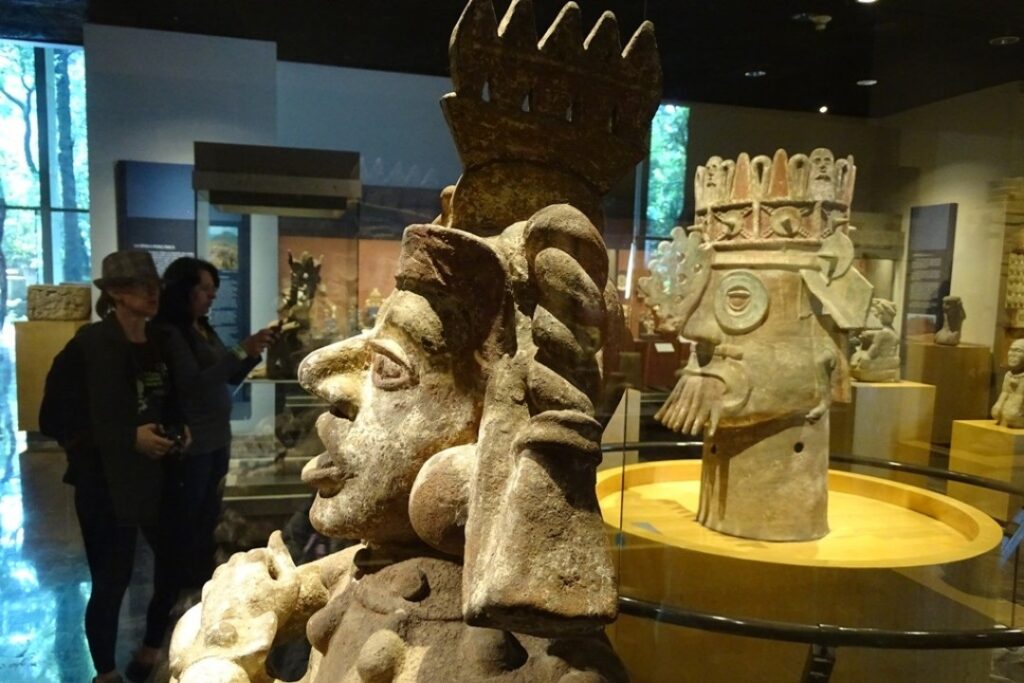
The worship rendered by the Mexica is one of the most famous among Mesoamerican cultures. These cultures used to have two important celebrations to venerate the dead: Miccailhuitontli and Hueymiccailhuitl.
The holiday that became Dia de los Muertos (Day of the Dead) commemorates the ninth month of the Mexica solar calendar, which was celebrated throughout the month. The ninth-month Tlaxochimaco (birth of flowers), was dedicated to Huitzilopochtli. Families held a solemn vigil, cooked in remembrance of the dead and the next day placed the food on the tombs.
However…
Dia de los Muertos, as we know it today, is a deeper look at the syncretism that took place with the arrival of Europeans to Mexican lands. For instance, the Mexica believed that when a person died, his spirit traveled to the underworld called the Mictlan. Then, the dead had to start a long crossing, and on the anniversary of their death, every year an altar would be made with offerings that would help them on their journey.
For example, objects that belonged to them, food, and their favorite drink could be placed on the altar. Additionally, people used to bury a little Xoloitzcuintle dog next to him to help him cross over and be a guide before he came to rest for the rest of his afterlife.
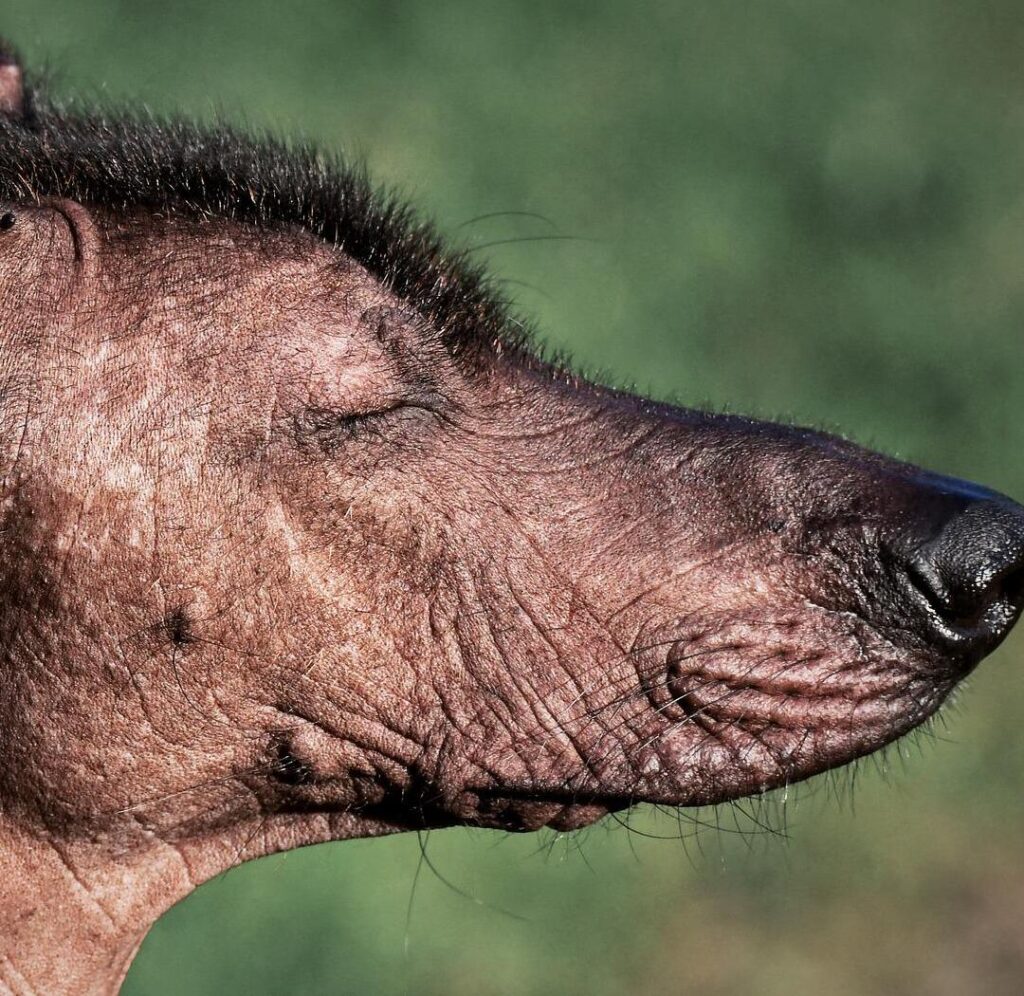
In the past, no date coincided exactly with November 2nd, which is the official date of All Souls’ Day. However, Spain did commemorate All Saints’ Day on November 1st, and on November 2nd, the Feast of the Faithful Departed. In Spain, people blessed the food to be eaten by the saints and prayed for the souls of the dead to come out of purgatory.
When the Spaniards arrived in Mexico, the process of syncretism began when two different cultures merged. Later in the 18th century, Dia de los Muertos had already been established. In the 19th century, on November 1st, 1821, the City Council of Mexico City made this festivity official as a great holiday!
Food and customs
After this celebration was declared an official holiday, people began to gather outside the Metropolitan Cathedral in Mexico City’s Zocalo to pray and eat. Several food stalls and activities were starting from November 1st until November 2nd. The dead used to be buried in churches, but when an epidemic hit in 1833, a cholera epidemic swept through Europe. Because of this, the dead were ordered to be taken to cemeteries outside the city, even in Mexico.
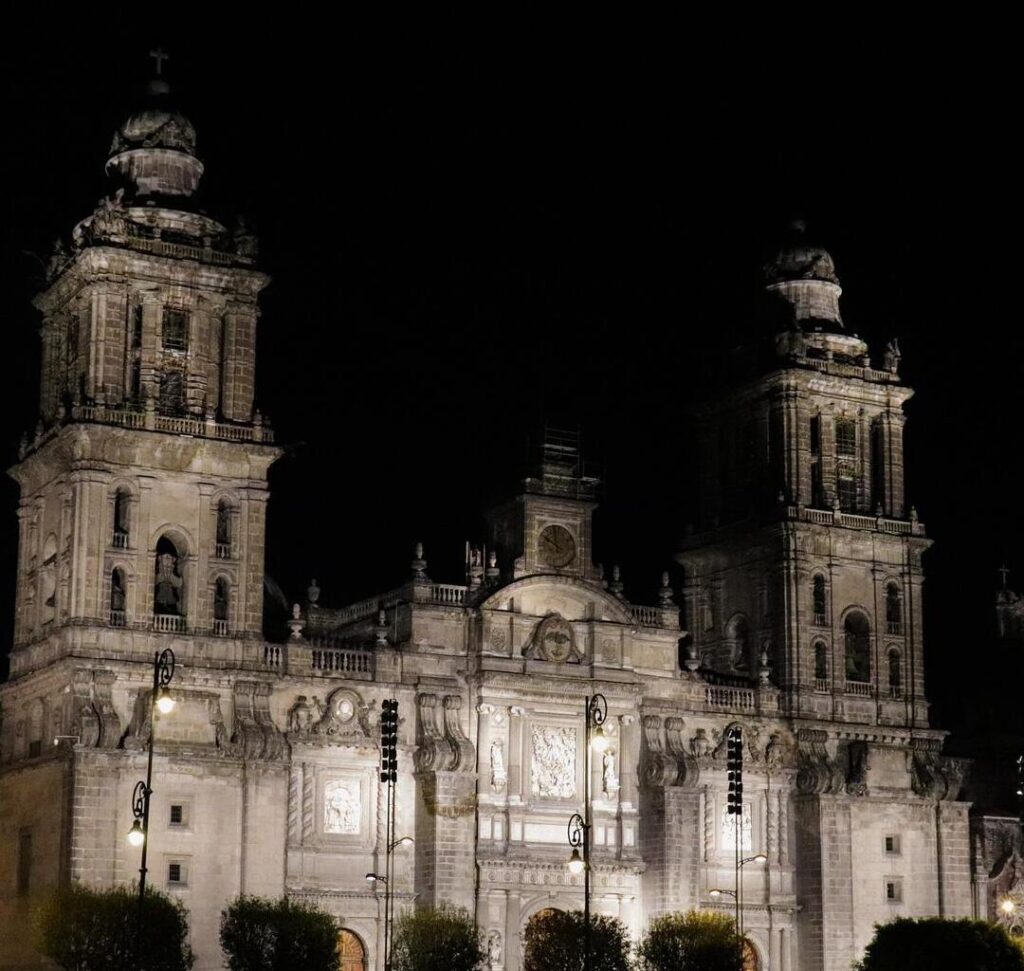
Actually…
Due to the walk duration, people carried a lot of food, such as bread, drinks like atole and coffee, and more food that their deceased relative would like. 🕯️Check out our post: Traditional Food of Mexico (Top 20 Dishes). This custom prevails in many states of Mexico. For example, in Michoacan, all the cemeteries still have very impressive food parties. In the southern part of Mexico City, these wonderful and colorful customs are also carried out.
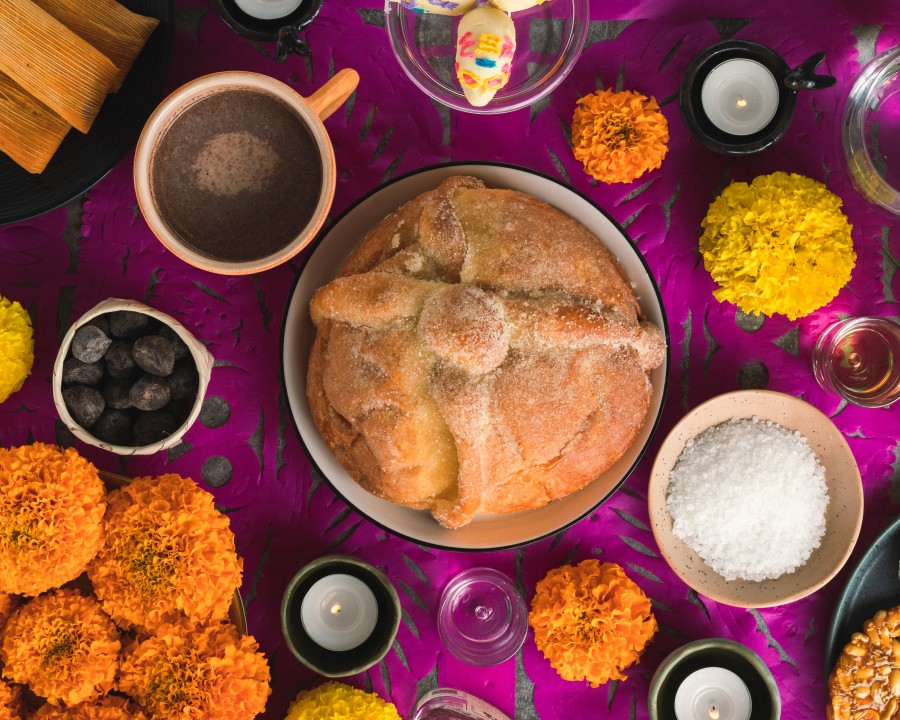
Dia de los Muertos vs Halloween
There are several differences between these two celebrations, however, you can notice similarities and things that make them both very special and unique.
Halloween
As we said before, Samhain, the day of the harvest, was on October 31. On that date, when time becomes darker, the wall that separates the living from the dead disappears completely. It was a great custom to make offerings of the harvest for the dead, to dress up, and to make huge bonfires.
Then…
When Christianity spread throughout Europe there was already a celebration of All Saints. However, in the year 741 Pope Gregory II moved this celebration to October 1st to make it coincide with the day before the Celtic Samhain. From here, the famous All Saints’ Eve was born. Later in the Anglo-Saxon world, it would be the famous Halloween.
It is said that this date is related to the Roman holiday Feralia. Here too, the dead were remembered and offerings of salt, bread, and precious flowers were brought to them and decorated unimaginably. Nowadays, Halloween has a different tinge due to the pop culture that Hollywood created with great horror classics. Even so, the tradition of its legends such as the legend of Stingy Jack or the tradition of the famous Trick or Treat remains.
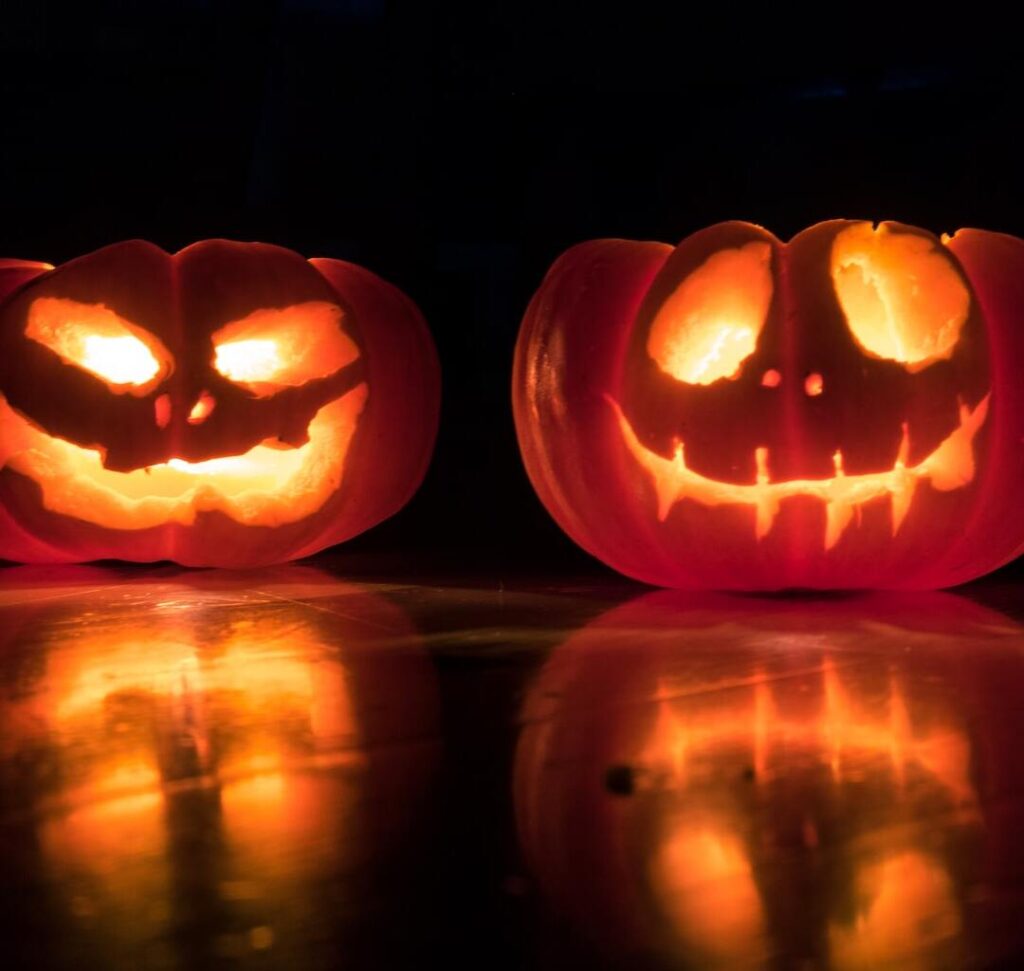
Dia de los Muertos
When the Spaniards arrived in Mesoamerica in the 16th century, they brought the celebration of All Saints’ Day and All Souls’ Day. Both celebrations have an enormous syncretism full of history, culture, and tradition. Also, you can see the resemblance with Feralia, specifically due to the Roman conquest of the Hispanic zone a thousand years ago.
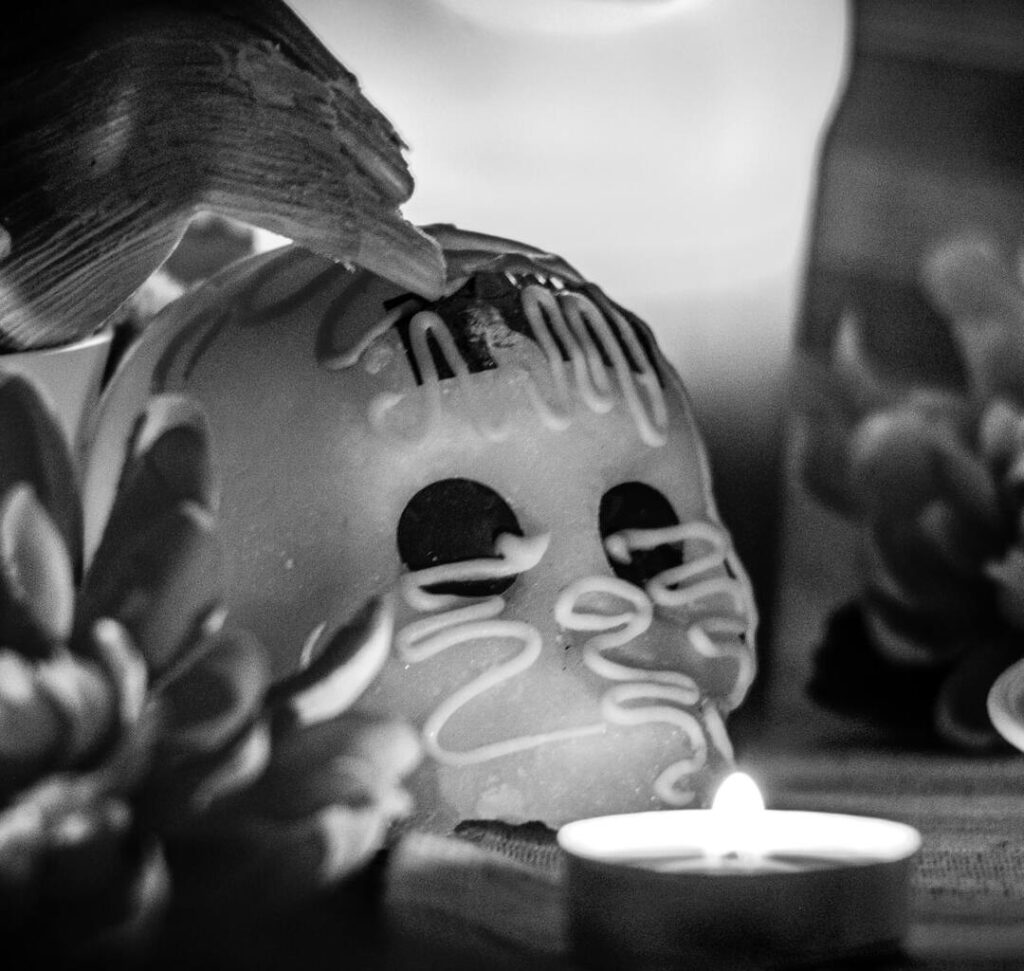
Interesting facts:
Did you know that…
- The state of Michoacan became so well known for its traditions in Patzcuaro and on the island of Janitzio, that Pixar made the production of its movie Coco, based on the traditions of these places.
- November 1st is the feast of the children.
- November 2nd is the feast of the adults.
- The name of the Mexican trick or treat is “calaverita“. This dates back to a famous pre-Hispanic legend.
- The United Nations Educational, Scientific and Cultural Organization (UNESCO) said that Dia de los Muertos was officially an Intangible Cultural Heritage of Humanity.
- In the Mexican tradition, people prayed before handing out the fruit or the Pan de Muerto (Dead Bread), at which time the elements of the ofrenda (offering for our relatives who are not here with us anymore) were shared.
- The Catrina (an elegantly dressed skeleton figure; used as a symbol of Dia de los Muertos) is very important for this celebration. Most of the people that day have Catrina or Catrin (male version of Catrina) makeup.
- Movies to get more into this special date: Macario, El libro de la vida, La leyenda de la llorona, and Coco.
Our best things to do in and near Mexico City
The festivities include practices such as graves with ornaments and setting up altars on the tombstones. In fact, these have great significance for families because they aim to help lead the souls and walk on a good path after death.
Dia de los Muertos 2024 Parade
Date: (Still waiting for the 2024 schedule; keep updated by visiting this article).
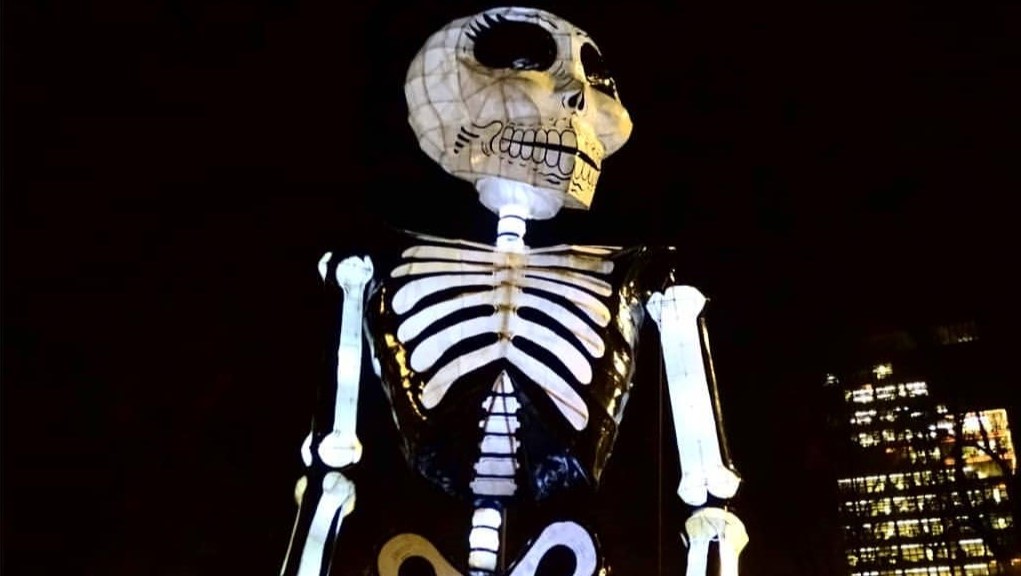
Chocolate and pan de muerto festival
Mexicans dedicate this delicious bread to those who return to Earth to be with their families, according to the Dia de los Muertos tradition. You will find many different presentations, flavors, and sizes. The event will take place on October 19 and 20 at the Instituto Pedagógico Anglo Español in the Roma neighborhood from 12 am to 7 pm. The entrance fee will be $50.
La llorona in Xochimilco
La Llorona is a multidisciplinary performance of music, theater, and dance. In Xochimilco, year after year through the dances, the costumes, and the staging, the spectators have the opportunity to remember, become aware, and take action on the Dia de los Muertos tradition.
Also known as “The Weeping Woman” this show represents this traditional Mexican story. For those who don’t know, it is about a ghostly woman who wanders along canals and rivers crying for her missing children. The ‘trajinera’ boats have a limited capacity of 20 people and there is a space of 2m between each person. At the entrance, there are sanitizing arches and hand sanitizer. In addition, the trajineras have all the sanitary requirements for a better experience. You can get your tickets here!
Dia de los Muertos 2024 Public Altars (Ofrendas)
One distinctive way to celebrate this festivity is with the altars (ofrendas). In honor of the deceased, at every Mexican home, you can see these lovely altars. To illustrate, Mexicans offer food, beverages, and special possessions to celebrate the ones who aren’t among us. All over Mexico City, you can admire these masterpieces!
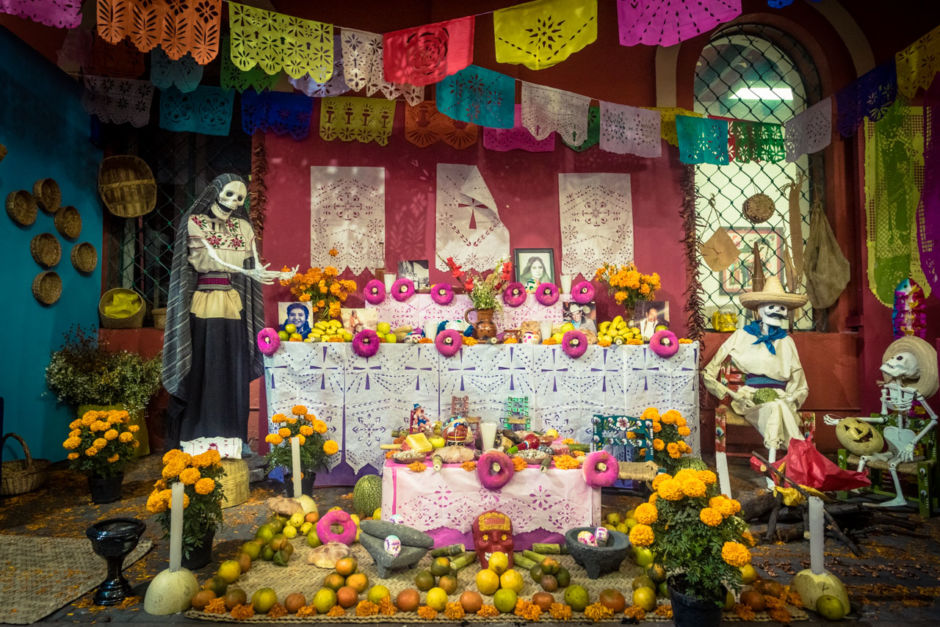
Catrinas Procession and Monumental Alebrijes Parade and Exhibition
The Alebrijes parade will take place on Saturday, October 19. Finally, if you want to see the pieces that participated in the Parade of Monumental Alebrijes 2024, you can visit them from Saturday, October 19 to Sunday, November 3 at Paseo de la Reforma Avenue in Mexico City. The Mega Procession of Catrinas 2024 will be on Sunday, October 27th. In each edition, different contingents with different themes are organized.
Visit Mixquic
Mixquic holds a special place in Mexican culture, as it is one of the most important destinations for celebrating Dia de los Muertos in Mexico. This annual event is a deep vision of Mexican traditions and beliefs surrounding death and the afterlife. ☠️Check out our Mixquic Experience (9 h)
For the people of Mixquic, Dia de los Muertos is not something to be sad for, but rather a colorful celebration of the lives of the ones that are no longer here on Earth. The town’s name, Mixquic, translates to “Place of the Clouds” in the indigenous Nahuatl language. The town’s location adds a mystical atmosphere that makes more magical and enchanting the celebration.💀Check out our post to learn more about Mixquic here!
Dia de los Muertos 2024 in Coyoacan
Walk around cobbled alleys, volcanic stone constructions, and old houses in a Colonial environment full of nature and provincial airs. Enjoy two and a half hours of historical facts and the legends of the Center of Coyoacan. This celebration in Coyoacan is full of color, creativity, tradition, celebration, and lots of fun. Learn the stories the streets, alleys, and corners of this neighborhood whisper, in the Dia de los Muertos special routes.
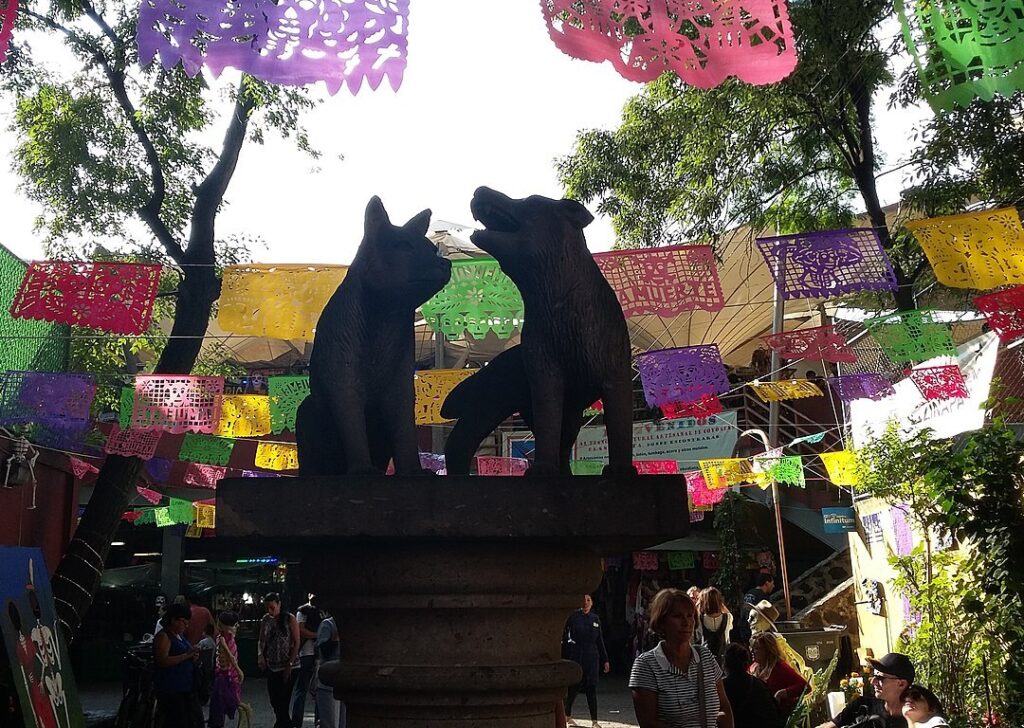
Visit Jamaica Market
If you are looking for a unique and wonderful place to buy souvenirs and things for your Dia de los Muertos offering, this is the place you were looking for. There are papel picado (chopped paper), pan de muerto (dead bread), sugar skulls, costumes, and thousands of cempasuchil (marigold) flowers. These traditional Day of the Dead flowers adorn the aisles of the market, making the place smell of tradition, culture, and love. The orange throughout the market will make you believe you are inside a sunset because of the orange you see everywhere.
Go to Teotihuacan
The ancient Mesoamerican City of the Gods holds special significance during Dia de los Muertos celebrations. This place is thought to have been a major religious center where gruesome sacrifices honoring dead were made. For Dia de los Muertos 2024, there are different activities that take place around the monumental Teotihuacan pyramids, including historic edifices like the Pyramid of Sun and the Valley of Moon.
People think these big stone buildings were used for old ceremonies about death. They were built to match up with stars and planets in the sky. For Día de los Muertos 2024, people will probably put up special tables, orange flowers, and colorful paper decorations all around. This shows how old traditions mix with new ways of remembering people who have died.
Discover and explore off-the-beaten-path Dia de los Muertos places near Mexico City
Want to experience Dia de los Muertos 2024 without the tourist masses? Check out Cuernavaca and Ocotepec. In the historic center of Cuernavaca, you will find altars in museum gardens and Dia de los Muertos exhibitions. The streets of the city light up with colorful adornments, flowers, and altars. Shedding light on traditional rituals in Cuernavaca life. Check out our Dia de los Muertos in Cuernavaca and Ocotepec tour! 📿
For a more intimate experience, visit the close town of Ocotepec. The centuries-old traditions are still honored with great zeal. Neighbors welcome strangers into their homes, often setting up rich altars to honor their dead family members. Stroll the market, explore its traditional churches, taste traditional pan de muerto and warm atole, or visit the tranquil chapel behind the town decorated in marigolds and candles. Ocotepec is where you will witness the soul of Dia de los Muertos, a personal and shared experience in remembrance and celebration.
Tepoztlán
Set in the mountains of Morelos, it is said to have a magical and mystical ambiance around. The cobblestone streets of this town are covered with marigold petals, leading to altars honoring the dead at the Ex-Convent of the Nativity. You can walk through the main market for typical souvenirs and conquer the Tepozteco mountain, so you can have a great view of the festivals underneath.
Chalcatzingo
Here, ancient and modern traditions mix at a beautiful archaeological site that was partly Olmec-dominated. For Dia de los Muertos 2024, night tours will showcase some of the mystic energy left at this spot. You can also enjoy a tour of prehispanic death rituals. Near the ancient rock carvings, local families often set up altars that merge past and present.
Jantetelco
This small town right outside Morelos is best known for the intricate and colorful Dia de los Muertos sawdust carpets. Every year, people fill the streets with elaborate paper skeletons and flowers with religious symbols. The entire town’s plazas will likely be lined with altars, and the smoke of copal incense in every corner.
Tetela del Volcan
Located near the Popocatepetl volcano, this city will host nighttime visits to local cemeteries where you can see families and friends leaving candles, photos, and flowers for their loved-ones. Sometimes, the community shares in traditional fayre and even tells a tale or two giving an insight into their ways. This tradition is pretty common in many other parts of Mexico.
Huaquechula
Famous for its monumental altars, this town in Puebla is a must for Dia de los Muertos 2024. Families may well offer to open up their own homes to demonstrate massive, multi-tiered altars. These altars are decked with brightly colored, intricate paper cutouts and Catholic symbols, reflecting the holiday’s themes. You can also find fruit as well as candles and photographs of family members who have passed away. Cultural events can also be found in the town’s main square (with traditional dancing, food, and music).
Atlixco
This City of Flowers will glow so well for the Dia de los Muertos 2024. The town’s streets are converted into stunning floral carpets, or “tapetes de flores,” composed mostly of locally grown marigolds. The sites are colorfully painted, with their paths set next to the Popocatepetl volcano, and some believe these pathways help guide spirits back to our world.
Festivities will probably include open houses-locals often create elaborate altars there, as traditional dances and music in the central plaza, as well made too if you have a chance of sampling regional specialties like mole poblano and pan de muerto ice cream. Yes, you read PAN DE MUERTO ICE-CREAM. 😱 In the evening, candlelit processions offer a moving combination of tradition and beauty-and of reverence for what this Mexican holiday truly means.
Other destinations in Mexico to visit
Oaxaca
The state of Oaxaca is famous for its colorful celebrations. There are always intricate sand tapestries in the streets, candlelit cemetery vigils, and comparsas (street parades) of people dressed up like skeletons, catrinas, devils, and other traditional characters for this date. Vendors will occupy the city markets with biscuits, colored sugar skulls, and marigolds. Want to celebrate an incredible Dia de los Muertos in 2024? Head to Oaxaca, obviously.
Michoacan
The Purepecha area surrounding Lake Patzcuaro in Michoacan is one of Mexico’s most traditional settings for Dia de los Muertos observances. In Patzcuaro, there will be lots of altars, candles, and exhibitions. Right on the island of Janitzio, fishermen will fill their canoes with candles and do “Dance fictitious Fish” amongst the lake. Families in Tzintzuntzan stay up all night watching over the dead, bedecking graves with flowers and candles.
Campeche
Hanal Pixan, the Mayan version of Dia de los Muertos, is celebrated in Campeche, blending ancient traditions with colonial influences. This “Food for the Souls” festival typically lasts from October 31 to November 2, with each day dedicated to different spirits. In Campeche, families create elaborate altars adorned with traditional foods like mucbil pollo (a large tamal), fruits, and local sweets.
A unique aspect of Campeche’s celebration is the “Limpieza de los Santos Restos” (Cleaning of the Holy Remains), where families visit cemeteries to clean and decorate the graves of their loved ones. They often repaint tombs, replace flowers, and leave offerings. As night falls, the cemeteries become alive with candlelight, prayers, and sometimes even live music, creating an atmosphere that is both solemn and celebratory, embodying the Mayan belief in the cyclical nature of life and death.
Aguascalientes
The birthplace of the legendary Catrina figure, Aguascalientes throws a Festival de Calaveras. In this city, expect huge Catrina parades, art exhibitions of skeletons and traditional sugar skulls, and a carnival atmosphere. The city typically erects a giant altar dedicated to Posada (creator of the Catrina), complete with gorgeous Catrina sculptures and traditional ofrendas.
Finally…
As you can see, this Mexican tradition is a blend of cultures. In fact, it goes from Roman culture, Mexica, and Christian culture. You will never regret discovering Mexican tradition through the eyes of its people and its traditions. Don’t be afraid to join this party; death is only the beginning. Get ready to enjoy this Dia de los Muertos 2024 in incredible places in Mexico you wouldn’t ever imagined they were real!
